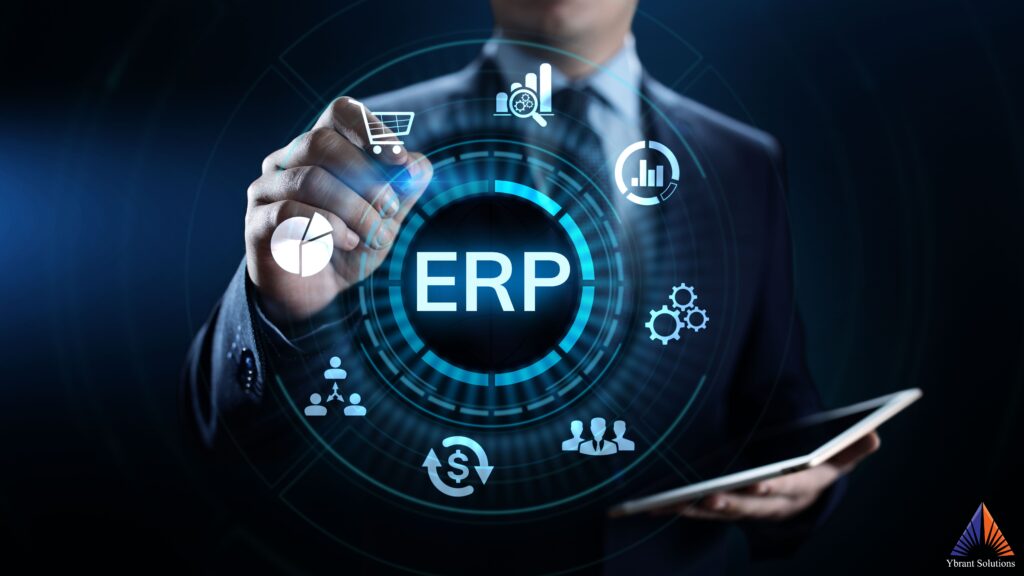The aerospace industry is a complex ecosystem, facing constant pressure to innovate while adhering to stringent regulations and managing intricate global supply chains. In this dynamic environment, Enterprise Resource Planning (ERP) systems have evolved from back-office tools to essential drivers of efficiency, compliance, and competitive advantage. This post explores why ERP is no longer optional, but indispensable for modern aerospace companies, and outlines a 5-step process for selecting the right solution.

Navigating the Complexities of Aerospace
Aerospace organizations, whether they are manufacturers, MRO providers, or suppliers, grapple with a unique set of challenges:
- Stringent Regulatory Landscape: Compliance with regulations like ITAR, FAA, and EASA is paramount. Penalties for non-compliance can be severe, making robust tracking and reporting capabilities crucial.
- Global Supply Chain Volatility: Geopolitical events, fluctuating material costs, and unexpected disruptions can wreak havoc on production schedules. Real-time visibility and agile responses are essential.
- Demand for Innovation: The relentless pursuit of next-generation aircraft and technologies requires significant investment in R&D. Balancing innovation with cost control is a constant challenge.
- Complex Manufacturing Processes: Aerospace manufacturing involves intricate assemblies, specialized materials, and rigorous quality control. Efficiently managing these processes is critical for on-time delivery and cost optimization.
- Data Security Concerns: The sensitive nature of aerospace data makes cybersecurity a top priority. Protecting intellectual property and ensuring data integrity are non-negotiable.
How ERP Addresses These Challenges
Modern ERP systems offer a comprehensive suite of tools designed to address the specific needs of the aerospace industry:
- Streamlined Supply Chain Management: ERP provides real-time visibility into inventory levels, supplier performance, and logistics, enabling companies to proactively manage disruptions and optimize procurement processes.
- Enhanced Regulatory Compliance: ERP systems automate the collection and reporting of data required for regulatory compliance, reducing the risk of errors and ensuring adherence to industry standards.
- Improved Manufacturing Execution: ERP integrates shop floor operations with planning and procurement, enabling efficient production scheduling, optimized resource allocation, and real-time tracking of work in progress.
- Data-Driven Decision Making: ERP systems provide access to comprehensive data analytics, empowering managers to make informed decisions about production planning, inventory management, and resource allocation.
- Enhanced Collaboration: ERP facilitates seamless communication and collaboration across departments, breaking down data silos and fostering a more integrated approach to operations.
- Robust Cybersecurity: Modern ERP systems incorporate advanced security features to protect sensitive data from unauthorized access and cyber threats.

ERP: A Catalyst for Growth and Innovation
By streamlining operations, improving compliance, and providing access to real-time data, ERP systems empower aerospace companies to:
- Reduce Costs: Optimize inventory levels, improve production efficiency, and minimize waste.
- Accelerate Time to Market: Streamline development processes and accelerate the introduction of new products.
- Enhance Customer Satisfaction: Improve on-time delivery and provide better customer service.
- Drive Innovation: Free up resources and enable greater investment in research and development.
5 Steps to ERP Selection for Aerospace Companies:
- Define Your Needs and Objectives: Before evaluating ERP systems, clearly define your business requirements, pain points, and desired outcomes. Involve key stakeholders from different departments to ensure a comprehensive understanding of your needs. Prioritize your requirements and identify must-have features versus nice-to-haves. For aerospace, consider specific needs like regulatory compliance (ITAR, etc.), complex BOM management, and MRO capabilities.
- Research and Evaluate ERP Vendors: Identify ERP vendors with experience in the aerospace industry and a proven track record of successful implementations. Look for vendors that offer solutions tailored to your specific needs and consider factors like scalability, functionality, and integration capabilities. Request demos and compare different systems side-by-side.
- Develop a Shortlist and Conduct Demos: Narrow down your list of potential vendors to a shortlist of 2-3. Schedule in-depth demos with each vendor, focusing on how their system addresses your specific requirements. Ask for customer references and case studies to understand their experience with similar aerospace companies.
- Consider Total Cost of Ownership (TCO): Evaluate the total cost of ownership, including software licensing fees, implementation costs, training expenses, and ongoing maintenance and support. Don’t just focus on the initial cost; consider the long-term costs associated with the system.
- Make Your Selection and Plan for Implementation: Once you’ve carefully evaluated all the options, make your final selection. Develop a detailed implementation plan that includes timelines, resources, and key milestones. Ensure you have a strong project team in place to manage the implementation process.
Ybrant Solutions: Your Partner in Aerospace Transformation
Ybrant Solutions is an IT consulting company that delivers ERP, Strategic Portfolio Management, Enterprise Architecture, and Cybersecurity solutions to mid-market organizations in the UK. We understand the unique challenges faced by the aerospace industry and offer tailored solutions to help companies achieve their strategic objectives. Our expertise in ERP implementation ensures seamless deployment and adoption, enabling aerospace enterprises to achieve digital transformation with minimal disruption. We can guide you through these 5 steps.
Conclusion
In today’s competitive landscape, ERP is no longer a luxury for aerospace companies – it’s a necessity. By embracing the power of ERP, aerospace organizations can streamline operations, improve compliance, and drive innovation, positioning themselves for success in the years to come. Investing in the right ERP solution, and the right partner like Ybrant Solutions, is an investment in the future of the business.



